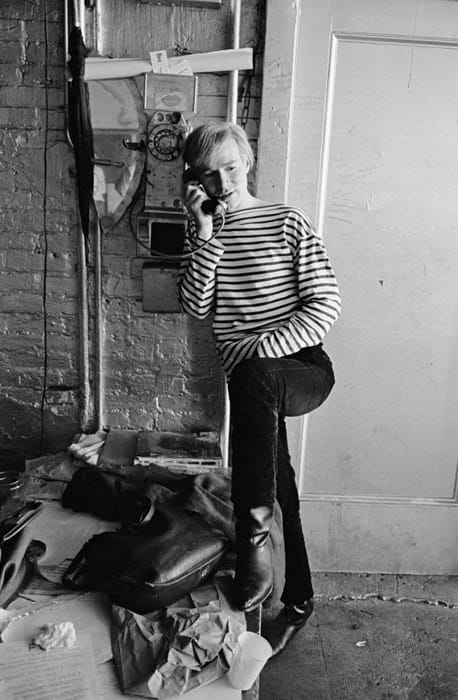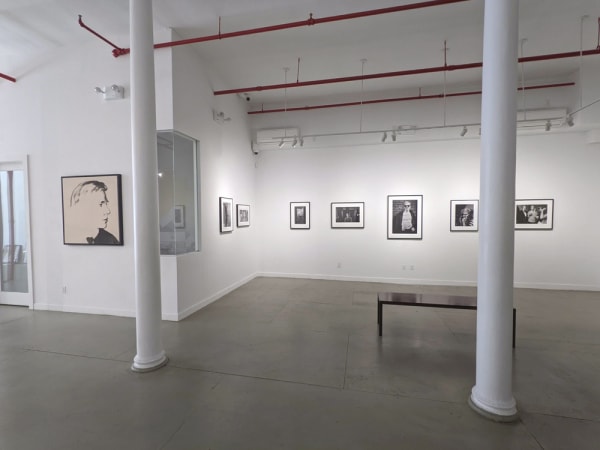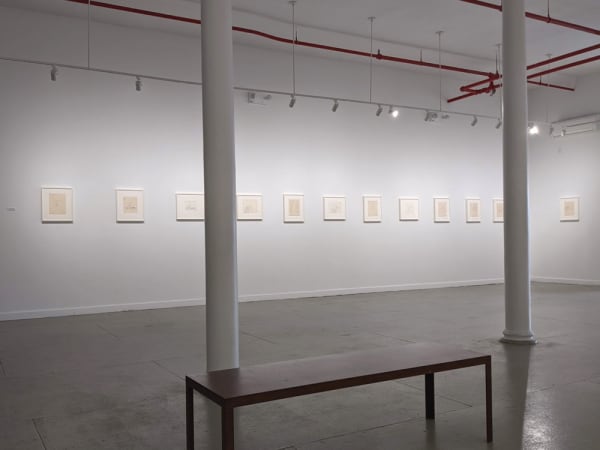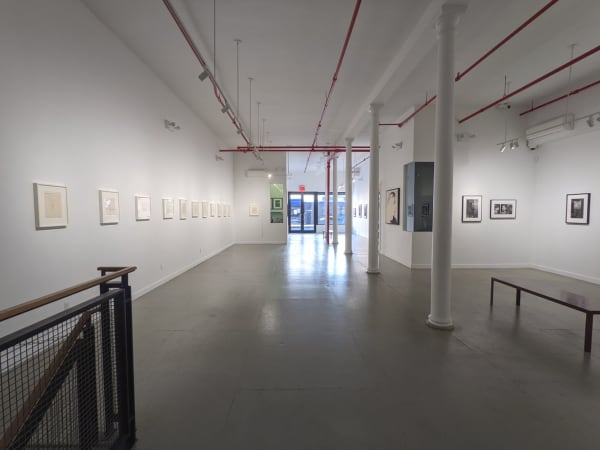Warhol B&W, 1950s-80s
WESTWOOD GALLERY NYC presents WARHOL B&W, a historic exhibition tracing four decades of Andy Warhol’s career through artworks created without color. On view are silkscreens on canvas and paper, early drawings, and rare 1960s photographs by Bob Adelman, many exhibited for the first time. Together, they reveal Warhol’s evolution from a commercial illustrator to one of the most influential figures in Pop Art.
Highlights include a rare silkscreen portrait of Joseph Beuys (c.1980), a fading self-portrait (c.1977), and twelve early 1950s drawings that showcase Warhol’s playful blotted-line technique. Adelman’s photographs capture Warhol in intimate and iconic moments at the Factory, with Edie Sedgwick, and at Leo Castelli Gallery with his Liz Taylor and Elvis works.
By focusing on Warhol’s black-and-white practice, the exhibition underscores the artist’s ability to distill form, presence, and cultural commentary without the distraction of color—revealing a more contemplative side of the Pop master.
-
 Bob Adelman, Andy Warhol at the Factory, 1965 (printed later)
Bob Adelman, Andy Warhol at the Factory, 1965 (printed later) -
 Bob Adelman, Actor Kevin McCarthy, Andy Warhol and Marisol Escobar at a Factory party, 1965
Bob Adelman, Actor Kevin McCarthy, Andy Warhol and Marisol Escobar at a Factory party, 1965 -
 Bob Adelman, Andy Warhol filming with movie camera at the Factory, 1965 (printed later)
Bob Adelman, Andy Warhol filming with movie camera at the Factory, 1965 (printed later) -
 Bob Adelman, Andy Warhol in the silver-foil covered bathroom at the Factory, 1965
Bob Adelman, Andy Warhol in the silver-foil covered bathroom at the Factory, 1965
WESTWOOD GALLERY NYC wass pleased to present WARHOL B&W, a historic exhibition covering four decades of Warhol’s career highlighting artwork without the influence of color. The exhibition included unique screen prints on canvas and paper, as well as early drawings by Warhol, and compelling 1960s photographs by Bob Adelman. The artworks on view reveal the creative output of the famous Pop artist across his career from his beginnings as a commercial illustrator to his height of artistic success. The curatorial selection, which includes many artworks never before exhibited, reflects the gallery program with a focus on research and cultivation of artwork not seen in decades.
Andy Warhol arrived in New York City in 1949, and began his artistic career as a commercial illustrator, developing a client list that included Vogue, Harper’s Bazaar, Vanity Fair, I Miller, and many others. As Warhol achieved commercial success, he formalized his artwork, and in the early 1960s began creating silkscreen paintings on canvas with polymer paint. Many of his 60s artwork reflected the great cultural changes of the time through portraits of celebrities, commercial products, and newspaper ads.
On view in the exhibition is a unique silkscreen of Joseph Beuys (c. 1980) on newsprint mounted on linen. Warhol and Joseph Beuys only met a few times, but the power of Beuys’ avant-garde and philosophical work was of interest to Warhol. One of Warhol’s master printers, Horst Weber von Beeren was a former student of Joseph Beuys at the Hamburg Academy of Fine Arts in Germany. Horst conveyed to Warhol the huge impact of Beuys' teachings, and Horst may have been one of the individuals responsible for facilitating the personal introduction to Joseph Beuys. In contrast to the Beuys portrait, also on exhibit is a Self-portrait of Andy Warhol, silkscreen on canvas (c. 1977). The image of Warhol is conservative with a partial view of his tie, but the portrait is cathartic as Warhol appears to be disappearing from view, due to a fade-out of negative space. Both original works were created with the simplicity of only black silkscreened paint to convey a more serious impression of the person, Beuys and Warhol.
The drawings on view are an example of Warhol’s success with his early commercial work, driven by his ability to draw imaginative subjects to reflect happier times in the post-war consumer era and prior to his transition to silk-screening. Warhol’s simple and spontaneous line drawings were a combination of pen and ink and the blotted line technique. Warhol’s 1950s child-like sprite character appears in narrative adventures. Twelve drawings of the sprite are included in the exhibition, as he is pushing a cart, contemplating machinery, or conducting music with a baton.
The signs of Warhol’s meteoric rise in the art world are seen in the photographs on exhibit by Bob Adelman. As an astute photographer who captured iconic images of Dr. Martin Luther King, as well as many historic New York City contemporary artists, the photographs on view are still not as known in the art world. On exhibit are photographs of Warhol in 1964 and 1965 in the 47th Street Factory, with Warhol behind the camera as he set up for film shoots for his movies with Edie Sedgewick and other Warhol Stars. Also, there are personal moments Adelman captured as Warhol posed on the fire escape and as he read the newspaper in the silver, aluminum foiled covered Factory bathroom, as well as Warhol posed with paintings from his ’13 Most Wanted Men’ series. Other photographs show Warhol at the Leo Castelli Gallery in 1965 signing Liz Taylor prints and posing with Elvis I and II.
The photographs by Adelman juxtaposed with the artwork by Warhol provide the viewer with a contemplative exhibition to look back at Andy Warhol, the person and the artist.












